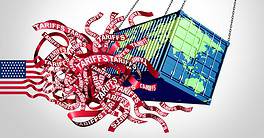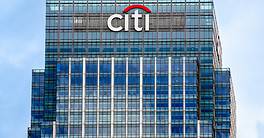Businesses worldwide are embracing real-time payments to cut costs and stay competitive in a digital economy.
Real-time payments (RTP) are rapidly transforming the way businesses move money, offering near-instant transfers that enable greater liquidity management and operational efficiency. Once primarily the domain of consumers, RTP—by which funds are sent and received in under 10 seconds—are increasingly becoming a critical tool for businesses looking to optimize cash flow, reduce reliance on costly intermediaries, and gain a competitive edge in an era of digital finance.
Despite reaching $22 trillion in turnover in 2024, according to Juniper Research, the high cost of digital transfers has kept many businesses on the sidelines. However, that is about to change, with global RTP volumes projected by Juniper to more than double to $58 trillion by 2028, driven by regulatory changes, technological advancements, and evolving business needs.
Key drivers behind RTP’s rapid expansion include growing corporate demand for instant liquidity, advancements in payment technology, and government initiatives aimed at promoting cashless economies.
“Businesses are beginning to realize the strategic benefits of real-time payments: not just speed, but enhanced control over working capital, and reduced counterparty risk,” says Matthew Purnell, a senior research analyst at Juniper Research.
The Single Euro Payments Area (SEPA) Instant Credit Transfer regulations, that took effect in the European Union (EU) in January, are poised to accelerate business adoption by mandating that eurozone RTP transactions be priced the same as standard credit transfers. Meanwhile, in the US, networks such as the Clearing House RTP and the Federal Reserve’s FedNow are increasing transaction limits to accommodate larger business payments.
While RTP adoption in developed markets has been gradual due to entrenched reliance on traditional payment systems, emerging markets such as India, China, and Brazil have experienced explosive growth. India’s Unified Payments Interface (UPI) processed an astonishing 172 billion transactions in 2024, valued at nearly $2.9 trillion, a 46% increase in the number of transactions and a 35% increase in value over the previous year.
The surge in RTP adoption in developing economies is largely due to the absence of widespread debit and credit card penetration, offering businesses and consumers alike an accessible digital-payment solution. “RTP provides an accessible payment solution for a population that is becoming increasingly banked,” Purnell adds.
Three Factors Fueling RTP Adoption
Purnell points to three major factors driving the adoption of RTP. First, the Covid-19 pandemic accelerated demand for digital transactions as businesses sought alternatives to in-person payments and cash handling. Second, advances in technology, such as smartphones equipped with digital wallets like Google Pay, and the proliferation of 5G wireless coverage, have made RTP more widely available. Finally, governments worldwide—from Sweden to Japan—are implementing policies to encourage the transition to cashless economies.

Among the most successful implementations of RTP in emerging markets, India’s UPI is a leading example of how RTP can drive economic inclusion while offering businesses a scalable and efficient payment solution. Designed by a government agency, the UPI framework seamlessly connects users’ smartphones with banks and the national digital identity system, providing near-universal access to banking services.
“Globally, UPI is among the most successful retail fast payment systems (FPS),” say economists at the Bank for International Settlements (BIS) and other institutions in a BIS report published at the end of last year. “Like other widely adopted FPS, it provides simplicity, safety and security to person-to-person and person-to-merchant transactions.” Unlike China’s payment ecosystem, where dominant players restrict access to competitors, UPI fosters an open environment that allows multiple companies to operate within the same system—encouraging innovation and competition.
Big Hurdle For Business Is High Cost
As the Indian example illustrates, consumers have until recently been the primary beneficiaries of RTP, with apps like Venmo in the US and Alipay in China allowing customers to pay for a Starbucks Frappuccino or split the cost of a meal with a half dozen friends. However, businesses have been relatively slow to utilize the technology for making business-to-business payments due to several hurdles—primarily cost. As a result, less than 10% of RTP transactions in Europe, for example, originate from companies.
“The one thing that’s holding back business adoption is differential pricing,” says Uzayr Jeenah, a Toronto-based leader in the global payments practice at consulting firm McKinsey. “Real-time payments are anywhere from three to five times more expensive for a business than a traditional payment rail,” he says, referring to the term for digital-payment infrastructure.

Nonetheless, the rationale for businesses to adopt RTP is becoming more compelling as a replacement for debit cards and wire transfers. One factor is speed. Being able to pay bills on the day they fall due allows companies to retain funds in their bank accounts longer, allowing a “float” that can earn significant interest revenue. In addition, applications driven by artificial intelligence (AI) have emerged that allow companies to carry out many transactions using digital payments without human intervention, reducing the need for accounting and other financial staff.
Jeenah says the implementation of the EU’s Instant Payments Regulation, adopted in March 2024 and encompassing SEPA, will be a “big catalyst for change” in RTP pricing this year.
“In most of the eurozone, there is no charge for a standard credit transfer,” says Scott McInnes, a partner in the Brussels office of Bird & Bird who specializes in payment questions. He adds that this probably means RTP for most businesses in Europe will have no cost. “I think in the near future virtually all business payments in the EU are going to real time because the system is going to be free, or virtually free,” McInnes says.
McInnes says the EU was motivated in part by a desire to offer a European alternative to credit and debit card issuers such as Visa and Mastercard, US card services corporations that charge high transaction fees to merchants.
New EU Regulation Will Ease Barriers For Business
The EU RTP regulation, SEPA Instant, will begin affecting outgoing payments in October for eurozone payment providers, including banks and fintech companies. Payment providers outside the eurozone will have until 2027 to comply, allowing time to address settlement challenges related to different currencies.
Susan Barton, director of Financial Services at EY Advisory in Milan, says SEPA Instant offers additional benefits for businesses. It removes the previous €100,000 (about $105,000) limit on individual payments and allows for batch processing—enabling companies to process up to 15,000 payments simultaneously, all within 10 seconds.
“There are positive impacts from a company’s treasury point of view, and benefits of knowing exactly when you’re paying people,” Barton says. “You pay all your employees, and that goes out immediately. It doesn’t take three to four days. It just helps a business with cash management.”
The EU rules will also impact foreign banks with eurozone branches, creating potential pathways for RTP expansion beyond the euro. For instance, a UK bank with a branch in Paris could receive instant payments via the UK Faster Payment system, and the bank could make euro-denominated RTP transactions through its European branch.
Australia’s New Payments Platform (NPP) also imposes no upper limit on transaction amounts, a trend designed to benefit large businesses handling substantial transactions to settle invoices. “You can do any transaction size over NPP,” says McKinsey’s Jeenah. “You’re starting to see even more business adoption there.” However, individual banks leveraging the NPP infrastructure retain the ability to set their own transaction limits. The NPP system is operated by Payments Plus, a company formed from the 2022 merger of domestic payment providers BPAY Group, eftpos, and NPP Australia.
In contrast, the two US RTP systems—the Clearing House’s RTP network and FedNow—both impose limits. The Clearing House recently raised its transaction cap from $1 million to $10 million, effective February 9, while FedNow currently maintains a limit of $100,000 per transaction, though financial institutions can request a boost to $500,000.
The Challenges Of Cross-Border RTPs
A major drawback of existing RTP systems is their domestic focus, with limited capabilities for cross-border transactions—except in the eurozone, where the euro provides a common currency. This presents a significant challenge for companies with global supply chains that require rapid payment transfers to overseas vendors. According to Statista, the total value of cross-border payments was approximately $190 trillion in 2023 and is projected to reach $290 trillion by 2030, highlighting the sector’s rapid expansion and the growing demand for innovation.
Currently, most cross-border transactions rely on the Society for Worldwide Interbank Financial Telecommunication (Swift) network, which does not transfer funds directly but rather facilitates payment orders between banks using intermediary correspondent banks to settle transactions. However, Swift transactions are costly and can take several days—posing a challenge for businesses operating in fast-paced international markets.
Several fintech companies, such as London-based Wise (formerly TransferWise); and Harbour & Hills, based in Hong Kong, have entered the market to provide faster, lower-cost alternatives to Swift. These fintechs facilitate cross-border payments by leveraging their internal networks to move funds locally rather than relying on interbank transfers. While this reduces costs, these services do not always provide significant improvements in speed.
The BIS is working to connect domestic RTP systems globally through Project Nexus, a central hub that allows payment networks to link to a single platform rather than integrating with each other individually. Project Nexus involves central banks from Singapore, Malaysia, Thailand, the Philippines, and India, with Indonesia as a special observer, aiming to enable seamless cross-border transactions among these nations by 2026.
A similar initiative was launched in 2021 in the Nordic region under the P27 Nordic Payments network, a joint venture of six regional banks aimed at enabling RTP across Denmark, Sweden, Finland, and Norway. However, P27 struggled due to political differences and failed to incorporate key players such as Norway’s Vipps and Denmark’s MobilePay. Those two popular mobile wallet providers merged in 2022 to form Vipps MobilePay. In April 2023, P27 withdrew its clearing license application, with CEO Paula de Silva admitting the project was “too ambitious and complex.”
“The primary challenge for cross-border RTP is not just speed, but settlement,” says Niklas Lemberg, head of industry engagement at Finnish bank Nordea. “The money needs to change owners instantaneously, and it has to be done using central bank money.”
New Solutions For Instant Cross-Border Settlements
In October 2024, J.P. Morgan introduced Wire365, a 24/7 US dollar settlement system that allows businesses to settle transactions globally at any time—marking a significant step toward continuous, real-time cross-border payments.
Meanwhile, distributed ledger technology, such as blockchain, is being explored as an alternative for real-time cross-border payments. Ripple Labs, a fintech based in San Francisco, has developed its own cryptocurrency, XRP, to facilitate near-instant global transactions. Funds are converted to XRP as an intermediary currency and then settled in the recipient’s local currency. However, concerns over cryptocurrency volatility have deterred some businesses from adoption.
To address volatility, Ripple has introduced a stablecoin, RLUSD, pegged to the US dollar. This allows businesses to transfer funds without exposure to currency fluctuations—potentially offering a more attractive cross-border payment solution.
Are Central Bank Digital Currencies The Future Of RTPs?
Central banks are also exploring their own solutions, with China’s digital yuan leading the way as the most advanced central bank digital currency (CBDC) to date. China’s digital yuan pilot had already processed $986 billion in transactions by the end of the second quarter of 2024, according to the country’s central bank deputy governor.
The European Central Bank is also pursuing a digital euro, with a decision on its future implementation expected at the end of 2025. Unlike cryptocurrencies, CBDCs would operate on private distributed ledgers, reducing transaction costs and enhancing transparency while maintaining regulatory oversight.
CBDCs could revolutionize cross-border payments by eliminating intermediaries, lowering costs, and enabling real-time tracking of transactions—providing businesses with greater efficiency and security.
A Cautionary Note About RTP Growth
Despite the opportunities RTP presents, potential risks exist for banks and financial institutions. A November 2024 paper entitled The Effect of Instant Payments on the Banking System: Liquidity Transformation and Risk-Taking, by writers at Brazil’s central bank, Columbia University, and the Wharton School of Business, warns that RTP adoption could increase liquidity pressures and risk-taking behavior.
The study suggests that RTP could limit banks’ ability to manage payment flows, forcing the banks to hold larger liquid asset buffers at the expense of higher yielding, less liquid investments. “Banks are effectively becoming ‘narrower,’” the report cautions.
However, as technology and regulatory frameworks continue to evolve, the business case for RTP adoption is expected to grow exponentially. The expanding use cases for RTP—including factoring and AI-driven payment automation—present a compelling opportunity for businesses to enhance their financial operations and gain a competitive advantage.




